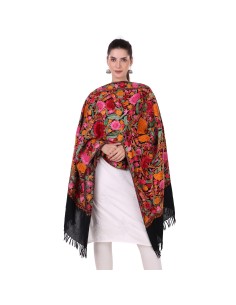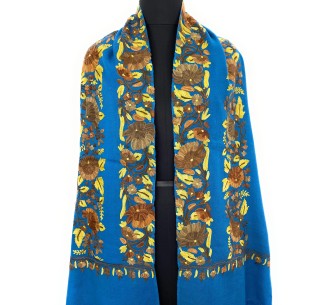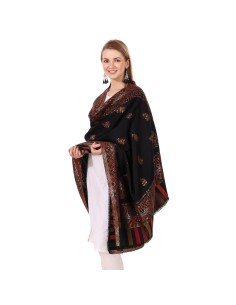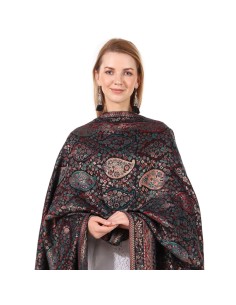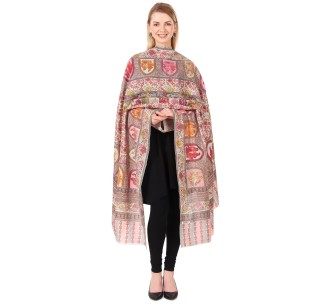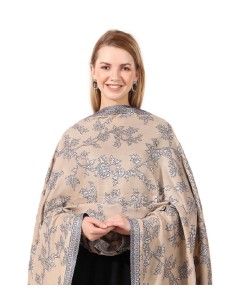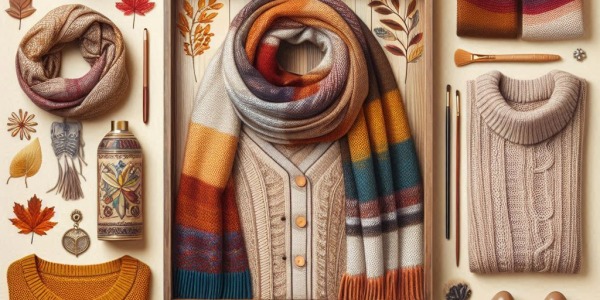- Pashmeen
- Style Guide
- 0 likes
- 92 views
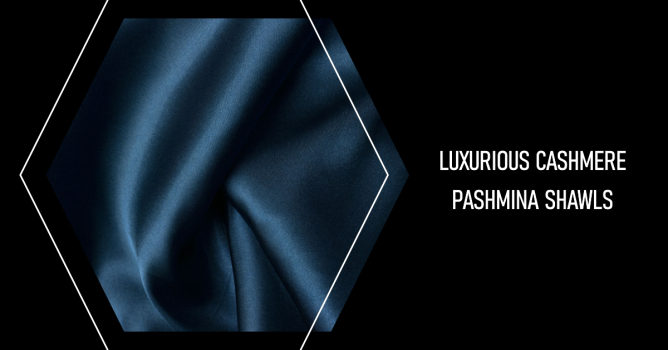
Cashmere Pashmina Shawls: The Ultimate Guide to Luxury and Elegance
Discover the timeless elegance and luxurious warmth of cashmere pashmina shawls. This comprehensive guide provides insights into the history, production process, styling tips, and care instructions for these exquisite fashion accessories.
Cashmere pashmina shawls have long been revered as symbols of luxury, elegance, and craftsmanship. Made from the fine fibers of the cashmere goat, these shawls offer unparalleled softness, warmth, and sophistication. In this ultimate guide, we delve into the world of cashmere pashmina shawls, exploring their history, the intricate production process, styling tips, and essential care instructions. Whether you're a connoisseur of fine fashion or simply looking to indulge in a luxurious accessory, this guide is your go-to resource for everything you need to know about cashmere pashmina shawls.
The Rich History of Cashmere Pashmina Shawls
Cashmere pashmina shawls have a rich history that dates back centuries. Originating from the Kashmir region, these shawls have been prized for their exceptional quality and craftsmanship. The history of cashmere pashmina shawls is intertwined with the culture and traditions of the region, and they have become iconic fashion pieces that showcase the heritage of Kashmiri artisans.
The Art of Crafting Cashmere Pashmina Shawls
The production of cashmere pashmina shawls involves a meticulous process that requires skilled artisans. We explore the journey of cashmere fibers from the Himalayan mountains to the hands of craftsmen who spin, weave, and finish the shawls. The intricate weaving techniques and the attention to detail that goes into creating these shawls are a testament to the artistry and dedication of the artisans.
Styling Tips: Elevating Your Fashion Game with Cashmere Pashmina Shawls
Cashmere pashmina shawls offer endless possibilities when it comes to styling. We provide tips on how to drape and style these shawls to enhance your outfits for different occasions. Whether you're attending a formal event or looking for a casual everyday look, we offer ideas and inspiration on how to incorporate cashmere pashmina shawls into your wardrobe.
Caring for Your Cashmere Pashmina Shawl
Proper care is essential to maintain the beauty and longevity of cashmere pashmina shawls. We provide guidance on how to clean and store your shawls to ensure they stay in pristine condition. From gentle hand washing techniques to storage tips that prevent damage, we cover all aspects of caring for your cashmere pashmina shawls.
Conclusion: Cashmere Pashmina Shawls
Cashmere pashmina shawls are not just fashion accessories; they are symbols of luxury, craftsmanship, and timeless elegance. With their unparalleled softness, warmth, and versatility, these shawls have become coveted items in the fashion world. By understanding their rich history, appreciating the intricate craftsmanship involved in their production, and learning how to style and care for them, you can fully embrace the allure of cashmere pashmina shawls. Elevate your fashion game and indulge in the luxury and sophistication that these exquisite accessories bring.
FAQs: Cashmere Pashmina Shawls
Q1: What makes cashmere pashmina shawls so special?
Cashmere pashmina shawls are highly sought after for their exceptional softness, warmth, and luxury. They are made from the fine fibers of the cashmere goat, which are meticulously sourced and woven into a delicate fabric. The craftsmanship involved, along with the rich history and cultural significance of these shawls, contributes to their exclusivity and desirability. Answer: Cashmere pashmina shawls are considered special due to their exceptional softness, warmth, and luxurious feel. They are made from the fine fibers of the cashmere goat, which are known for their superior quality and insulation properties. The intricate weaving techniques and the meticulous craftsmanship involved in their production make them highly coveted fashion accessories.
Q2: Are cashmere pashmina shawls suitable for all seasons?
Cashmere pashmina shawls are versatile accessories that can be worn in various seasons. The fine cashmere fibers offer warmth during colder months, while their lightweight and breathable nature makes them suitable for draping over shoulders or accessorizing outfits during milder weather. Whether it's to add an extra layer of warmth in winter or a stylish accent in spring and summer, cashmere pashmina shawls can be adapted to different seasons. Answer: Yes, cashmere pashmina shawls are suitable for all seasons. The fine cashmere fibers provide warmth during colder months, while their breathable nature allows for comfortable wear during warmer seasons. Cashmere has excellent insulating properties, making it suitable for maintaining body temperature in various weather conditions. Additionally, the lightweight and soft texture of cashmere pashmina shawls make them versatile accessories that can be draped over the shoulders or used as stylish wraps throughout the year
Q3: How should I clean and store my cashmere pashmina shawl?
To maintain the quality of your cashmere pashmina shawl, it is recommended to hand wash it using a mild detergent or baby shampoo. Fill a basin or sink with lukewarm water and add a small amount of detergent. Gently swirl the shawl in the soapy water, avoiding any harsh scrubbing or twisting. Rinse the shawl with cool water until the water runs clear. Squeeze out excess water by pressing the shawl against the sides of the basin, being careful not to wring or twist it. Lay the shawl flat on a clean towel and roll it up to absorb any remaining moisture. Then, reshape the shawl and lay it flat on a drying rack or clean towel to air dry. Avoid hanging the shawl, as it may stretch and lose its shape. When storing your cashmere pashmina shawl, make sure it is clean and completely dry. Fold it neatly to prevent creases and place it in a breathable storage bag or wrap it in acid-free tissue paper. Avoid storing it in plastic bags or containers, as this can trap moisture and lead to mildew or musty odors. Store the shawl in a cool, dry place away from direct sunlight and strong odors. Periodically check on the shawl to ensure there are no signs of damage or pests.
Q4: Can I repair or restore a damaged cashmere pashmina shawl?
Yes, it is possible to repair or restore a damaged cashmere pashmina shawl. If you notice any tears, loose threads, or fraying edges, it is best to consult a professional tailor or textile restoration specialist who specializes in cashmere. They have the expertise and tools to assess the damage and provide appropriate repair or restoration solutions. Depending on the extent of the damage, they may be able to mend tears, reinforce loose threads, or trim frayed edges to restore the shawl's original beauty and integrity. It is important to address any damage as soon as possible to prevent further deterioration and prolong the lifespan of your cashmere pashmina shawl.
Q5: Are cashmere pashmina shawls suitable for people with allergies?
Cashmere pashmina shawls are hypoallergenic, making them suitable for individuals with allergies or sensitive skin. Cashmere fibers are naturally soft and gentle, minimizing the risk of irritation or allergic reactions. However, it is always advisable to check the specific details of the cashmere pashmina shawl, including any dye or chemical treatments, to ensure it is free from potential allergens. If you have known allergies or sensitivities, it is recommended to perform a patch test before wearing the shawl against your skin for an extended period.
The Collection
Artisanal Blue Hand Aari Work Pure Wool Scarf - Exquisite Wood Yellow Flower Stripe...
Handmade Kalamkari Wool Shawl - Beige with Traditional Indian Dance Print
More Blogs

Denim & Drapes: Style Simplified
#Denim & Drapes: Style Simplified This blog post provides practical advice on how to enhance denim outfits using scarves, shawls, and stoles. It differentiates between these accessories and offers styling tips for casual and elegant looks, considering seasonal variations and various draping techniques. It emphasizes the versatility of denim as a backdrop for colorful and patterned accessories. The post also highlights the Pashmeen brand's collection of high-quality drapes and encourages readers to explore their range for stylish denim pairings.
Read more
Craftsmanship, Comfort, and Elegance: Discover the Warmth of Indian Kashmiri Crochet Embroidered Scarves
Explore the timeless beauty of Indian Kashmiri wool scarves adorned with intricate crochet hook embroidery. Learn about their history, craftsmanship, and how to style these exquisite pieces.
Read more
Diwali 2024 Fashion Trends with Pashmeen: Elevate Your Festive Look
Celebrate Diwali with Pashmeen: Elevate Your Festive Fashion As Diwali approaches, it's the perfect time to refresh your wardrobe with elegant accessories from Pashmeen. Our collection of luxurious scarves, stoles, and shawls will enhance your festive looks, combining traditional craftsmanship with modern design. Key Trends: Vibrant Colors: Embrace rich jewel tones like emerald green and ruby red for a festive touch. Statement Accessories: Oversized scarves with intricate designs can elevate any outfit, from sarees to lehengas. Sustainable Choices: Opt for ethically sourced pashmina to enjoy luxury while being environmentally conscious. Mix and Match Styles: Pair traditional attire with modern pieces for a unique look. Comfort Meets Style: Lightweight stoles are perfect for long celebrations while keeping you stylish. Explore our exclusive Diwali collection and find the perfect accessory to make this festive season unforgettable!
Read more
Embrace Elegance with Our Kashmiri Aari Hand Embroidered Pashmina Scarves
Discover the elegance of Kashmiri Aari hand embroidered Pashmina scarves at Pashmeen. Our scarves blend the luxurious feel of Pashmina with the intricate beauty of traditional Kashmiri embroidery, making them perfect for any occasion. Whether you’re dressing up for an event or staying warm in the mountains, our scarves offer both style and comfort. Explore our collection today and experience the timeless charm of handcrafted artistry.
Read more

